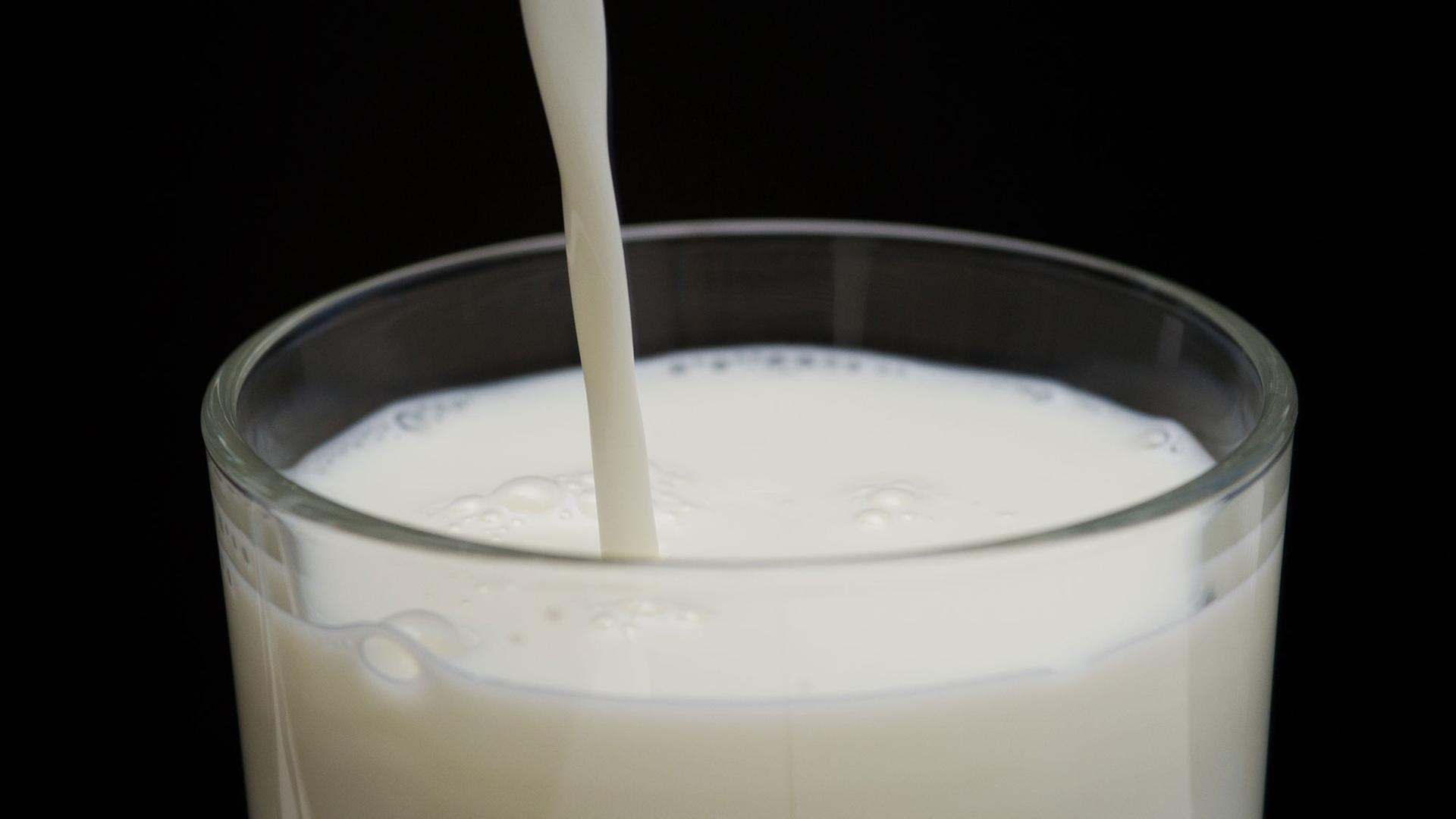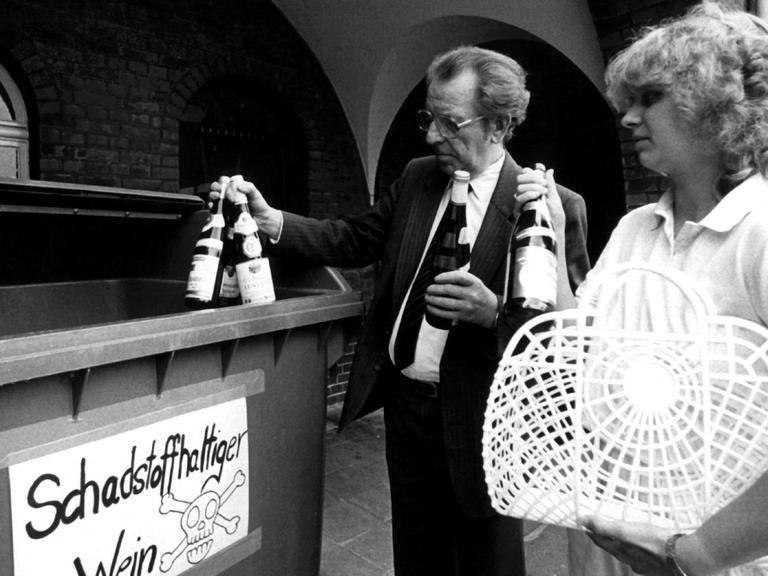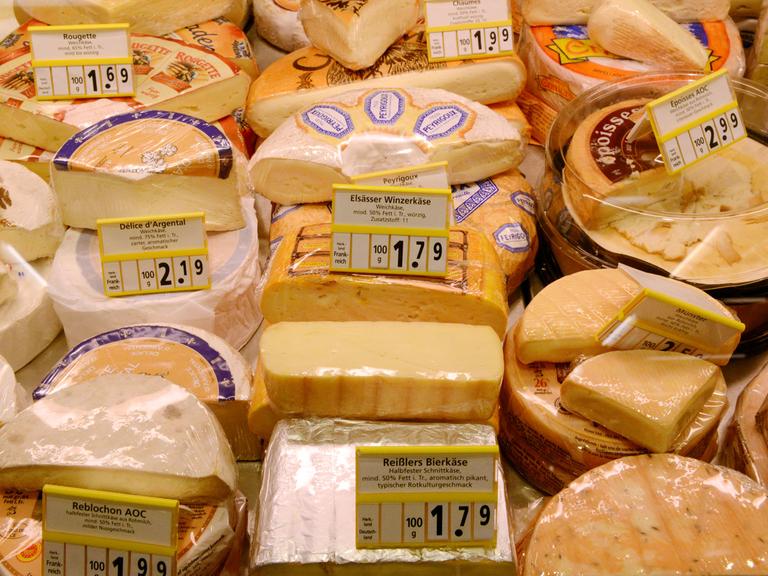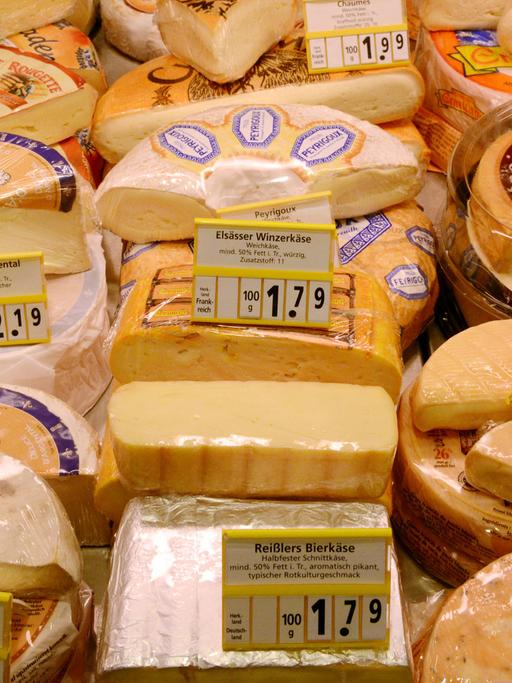Wenn nicht drin ist, was draufsteht

Unsere Lebensmittel werden angeblich immer sicherer. Auf der anderen Seite gibt es immer neue Verunreinigungen und Verfälschungen, die aufgedeckt werden. Udo Pollmer verrät die Tricks der internationalen Panscherszene: Bitte anschnallen!
Die große Leistungsshow der Lebensmittelwirtschaft, die Grüne Woche, neigt sich dem Ende zu. Beim Anblick der vielen hübschen Tiere habe ich etwas vermisst: die schwarzen Schafe, die regelmäßig das Image der Branche beflecken. Die Produktion ist globalisiert, der Handel bereit, alles jedermann allerorten anzubieten. So kann Gepanschtes aus Burma schon kurz darauf in Berlin in den Regalen liegen. Schwarze Schafe gibt es schließlich überall. Das Thema fordert eine globale Perspektive.
Kehren wir erst vor der eigenen Türe: Seit Jahren werden uns statt edler Seezungen kulinarisch lausige Fische untergejubelt. Das Hamburger Max-Rubner-Institut überprüfte zum wiederholten Male die Lage. In der Gastronomie hat sich nichts geändert: Bei jeder zweiten Bestellung servierten die Kellner statt des Edelfischs simplen Pangasius oder sogar Hundszungen. Die knapp 100 Proben aus dem Handel waren hingegen bis auf eine Ausnahme alle korrekt. Demnach bescheißt jeder zweite Küchenchef seine Gäste vorsätzlich.
Ein Kugelfisch im Tarnanzug
Auch in Brüssel beklagen Analytiker, in Restaurants und EU-Kantinen werde dem Gast statt Kabeljau und Co. ebenfalls billiger Pangasius aufgetischt. Nicht anders in Spanien, Griechenland oder Italien; die Uni Pisa spricht bei Fisch von bis zu 80 Prozent falscher Angaben. Um nicht den Argwohn der Behörden zu wecken, deklarieren Asia-Shops ihre getrockneten Quallen einfach als "Gemüse". Lebensgefährlicher Kugelfisch wurde als "Calamari" getarnt.
Selbst beim Fälschen wird noch gefälscht, wie türkische Kollegen ermittelten. Krebsfleisch wird gern aus Surimi nachgemacht. Dazu werden Fische, die normalerweise nicht als Speisefisch angeboten werden, wie zum Beispiel der Alaskapollack mit diversen Zusätzen zu einer gummigen Masse geliert, orange angefärbt und in Stücke geschnitten. Doch dort, wo auf Lateinisch Alaskapollack draufstand, war der Billigfisch häufig durch noch billigeren ersetzt worden. Nicht mal der Schmu ist echt.
Milch ist ein ganz besonderer Saft
Indien wird gerade von einem Milchskandal erschüttert. Das Land ist zwar einer der größten Milcherzeuger weltweit, aber es reicht trotzdem nicht. Die Molkereien strecken das Grundnahrungsmittel mit Sojamilch. Die ist nicht nur spottbillig, sondern wird von vielen Eltern bewusst gemieden – nicht wegen ökologischer Bedenken, sondern wegen ihrer fragwürdigen Hormongehalte und hohen Allergenität.
In einem anderen großen Milcherzeugerland, in Brasilien, sieht es nicht besser aus: Verdorbene Milch wird mit Wasser gestreckt, mit Natronlauge neutralisiert und dann mit Formaldehyd, Peroxiden oder Chlor haltbar gemacht. Die häufigste Manipulation: Jede zweite H-Milch war mit Harnstoff oder mit Urin gestreckt – und dann geschmacklich mit Zucker usw. nachbearbeitet. Wir Deutsche brauchen uns da nicht zu ekeln. In Gesundheitssendungen wurde vor Jahren von prominenten Moderatorinnen ungeniert das Trinken von Urin als Prävention empfohlen. Einschlägige Bücher wie "Die goldene Fontäne" finden noch heute Interesse. Da sind ein paar Spritzer in der Milch nicht unappetitlicher als ein Fläschchen gereifte ARD-Moderatorinnen-Pipi.
Kaum ein Fettnäpfchen wird ausgelassen
In Polen schießen sich die Analytiker auf Butter ein, weil sie Palmöl enthält. Brisant wird die Sache durch eine Schweinerei, die in Taiwan aufflog: Dort entpuppte sich vermeintliches Palmöl im Essen als Weichmacher für Kunststoff, genauer gesagt als Phthalat. In China hingegen fahndet man nach Kokosfett mit tierischem Fett. Dafür werden Geflügelreste ausgelaugt und das Öl dem sündteuren "nativen Kokosöl" zugesetzt - in China eine supergesunde rein pflanzliche Leckerei.
Die chinesischen Behörden haben noch einen Braten gerochen: Offenbar werden für Hammelspieße und Geschnetzeltes gerne Mäuse und Ratten verwendet. Nun wäre das nicht weiter tragisch, wenn es sich um Nager aus kontrollierter Mast oder Wildfängen mit Fleischbeschau handeln würde. Aber offenbar werden die Mäuse- und Rattenkadaver nach größeren Vergiftungsaktionen eingesammelt und zum Schnäppchenpreis an die Köche abgegeben. Die chinesische Lebensmittelüberwachung ist entsetzt und warnt. Mahlzeit!
Literatur
Kappel K, Schröder U: Substitution of high-priced fish with low-priced species: Adulteration of common sole in German restaurants. Food Control 2016; 59: 478e486
Thomas C: Ein ganz besonderer Saft – Urin. Piper, München 1999
Kroon van der C: Die goldene Fontäne. Die praktische Anwendung der Urin-Therapie. Vgs, Köln 1998
Lohumi S et al: A review of vibrational spectroscopic techniques for the detection of food authenticity and adulteration. Trends in Food Science & Technology 2015; 46: 85e98
Yang J et al: Taiwan food scandal: the illegal use of phthalates as a clouding agent and their contribution to maternal exposure. Food and Chemical Toxicology, 2013; 58, 362e368
Di Pinto A et al: Species identification in fish fillet products using DNA barcoding. Fisheries Research 2015; 170: 9–13
Yen TH et al: Food safety involving ingestion of foods and beverages prepared with phthalate-plasticizer-containing clouding agents. Journal of the Formosan Medical Association 2011; 110: 671e684
Jaiswal P et al: Detection and quantification of soymilk in cow–buffalo milk using Attenuated Total Reflectance Fourier Transform Infrared spectroscopy (ATR–FTIR). Food Chemistry 2015; 168: 41–47
Botelho BG et al: Development and analytical validation of a screening method for simultaneous detection of five adulterants in raw milk using mid-infrared spectroscopy and PLS-DA. Food Chemistry 2015; 181: 31–37
Di Pinto A et al: Packaged frozen fishery products: species identification, mislabeling occurrence and legislative implications. Food Chemistry 2016; 194: 279–283
Xu B et al: Detection of virgin coconut oil adulteration with animal fats using quantitative cholesterol by GC GC–TOF/MS analysis. Food Chemistry 2015; 178: 128–135
Xin Fang, Chi Zhang: Detection of adulterated murine components in meat products by TaqManreal-time PCR. Food Chemistry 2016; 192: 485–490
Keskin E, Atar HH: Molecular identification of fish species from surimi-based products labeled as Alaskan pollock. Journal of Applied Ichthyology 2012; 28: 811–814
Munoz-Colmenero M et al: Evolution of hake mislabeling niches in commercial markets. Food Control 2015; 54: 267e274
Stamatis C et al: What do we think we eat? Single tracing method across foodstuff of animal origin found in Greek market. Food Research International 2015; 69: 151–155
Oceana Europe: Too cheap tob e true: Seafood fraud in Brussels. Fact Sheet Nov. 2015
Armani A et al: DNA barcoding reveals commercial and health issues in ethnic seafood sold on the Italian market. Food Control 2015; 55: 206e214
Armani A et al: DNA barcoding reveals commercial and health issues in ethnic seafood sold on the Italian market. Food Control 2015; 55: 206e214
Tomaszewska-Gras J: Rapid quantitative determination of butter adulteration with palm oil using the DSC technique. Food Control 2016; 60: 629e635
Rebechi SR et al: Adulteration of Argentinean milk fats with animal fats: Detection by fatty acids analysis and multivariate regression techniques. Food Chemistry 2016; 192: 1025–1032
Kamal M, Karoui R: Analytical methods coupled with chemometric tools for determining the authenticity and detecting the adulteration of dairy products: A review. Trends in Food Science & Technology 2015; 46: 27e48
Kappel K, Schröder U: Substitution of high-priced fish with low-priced species: Adulteration of common sole in German restaurants. Food Control 2016; 59: 478e486
Thomas C: Ein ganz besonderer Saft – Urin. Piper, München 1999
Kroon van der C: Die goldene Fontäne. Die praktische Anwendung der Urin-Therapie. Vgs, Köln 1998
Lohumi S et al: A review of vibrational spectroscopic techniques for the detection of food authenticity and adulteration. Trends in Food Science & Technology 2015; 46: 85e98
Yang J et al: Taiwan food scandal: the illegal use of phthalates as a clouding agent and their contribution to maternal exposure. Food and Chemical Toxicology, 2013; 58, 362e368
Di Pinto A et al: Species identification in fish fillet products using DNA barcoding. Fisheries Research 2015; 170: 9–13
Yen TH et al: Food safety involving ingestion of foods and beverages prepared with phthalate-plasticizer-containing clouding agents. Journal of the Formosan Medical Association 2011; 110: 671e684
Jaiswal P et al: Detection and quantification of soymilk in cow–buffalo milk using Attenuated Total Reflectance Fourier Transform Infrared spectroscopy (ATR–FTIR). Food Chemistry 2015; 168: 41–47
Botelho BG et al: Development and analytical validation of a screening method for simultaneous detection of five adulterants in raw milk using mid-infrared spectroscopy and PLS-DA. Food Chemistry 2015; 181: 31–37
Di Pinto A et al: Packaged frozen fishery products: species identification, mislabeling occurrence and legislative implications. Food Chemistry 2016; 194: 279–283
Xu B et al: Detection of virgin coconut oil adulteration with animal fats using quantitative cholesterol by GC GC–TOF/MS analysis. Food Chemistry 2015; 178: 128–135
Xin Fang, Chi Zhang: Detection of adulterated murine components in meat products by TaqManreal-time PCR. Food Chemistry 2016; 192: 485–490
Keskin E, Atar HH: Molecular identification of fish species from surimi-based products labeled as Alaskan pollock. Journal of Applied Ichthyology 2012; 28: 811–814
Munoz-Colmenero M et al: Evolution of hake mislabeling niches in commercial markets. Food Control 2015; 54: 267e274
Stamatis C et al: What do we think we eat? Single tracing method across foodstuff of animal origin found in Greek market. Food Research International 2015; 69: 151–155
Oceana Europe: Too cheap tob e true: Seafood fraud in Brussels. Fact Sheet Nov. 2015
Armani A et al: DNA barcoding reveals commercial and health issues in ethnic seafood sold on the Italian market. Food Control 2015; 55: 206e214
Armani A et al: DNA barcoding reveals commercial and health issues in ethnic seafood sold on the Italian market. Food Control 2015; 55: 206e214
Tomaszewska-Gras J: Rapid quantitative determination of butter adulteration with palm oil using the DSC technique. Food Control 2016; 60: 629e635
Rebechi SR et al: Adulteration of Argentinean milk fats with animal fats: Detection by fatty acids analysis and multivariate regression techniques. Food Chemistry 2016; 192: 1025–1032
Kamal M, Karoui R: Analytical methods coupled with chemometric tools for determining the authenticity and detecting the adulteration of dairy products: A review. Trends in Food Science & Technology 2015; 46: 27e48



